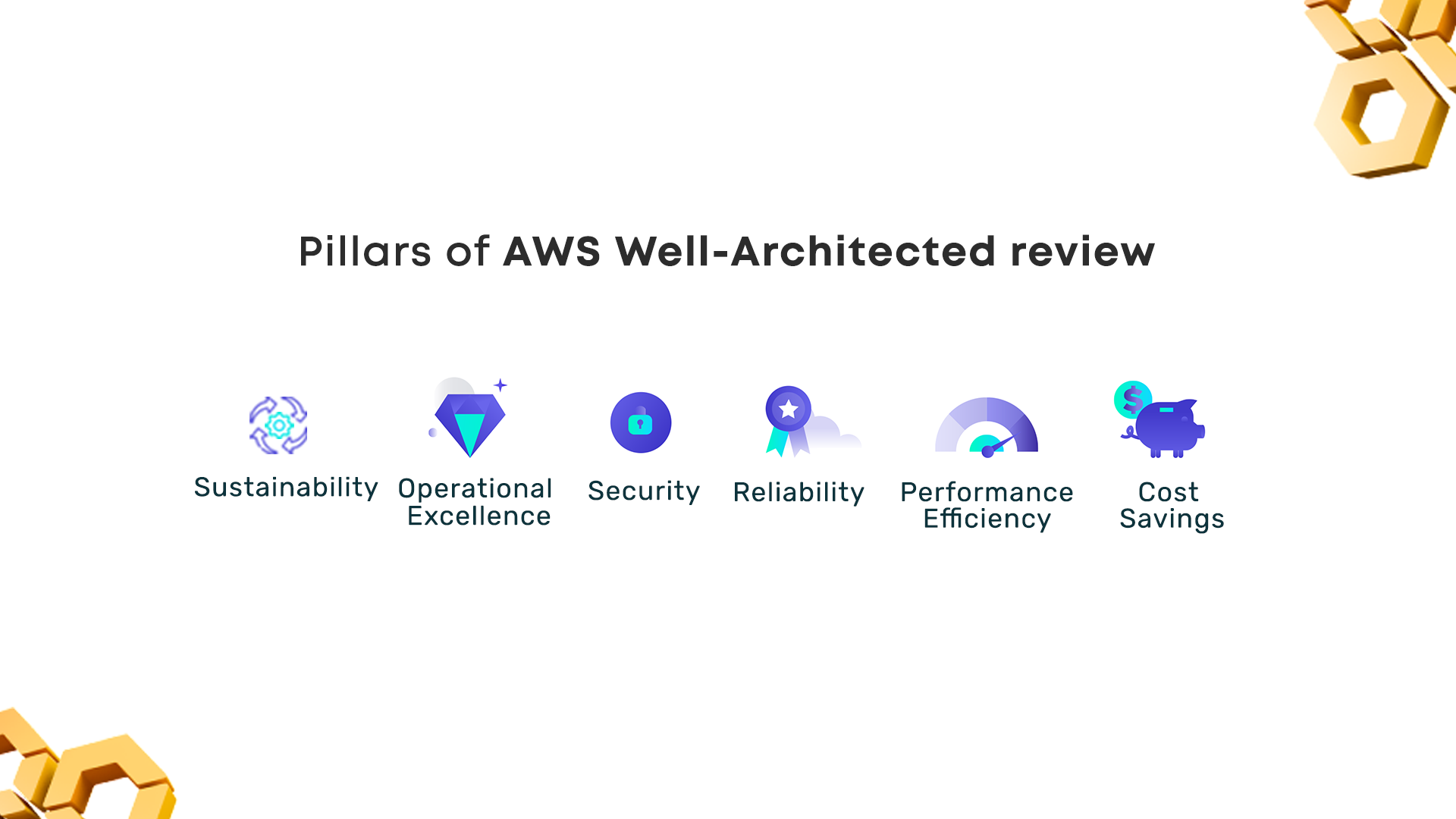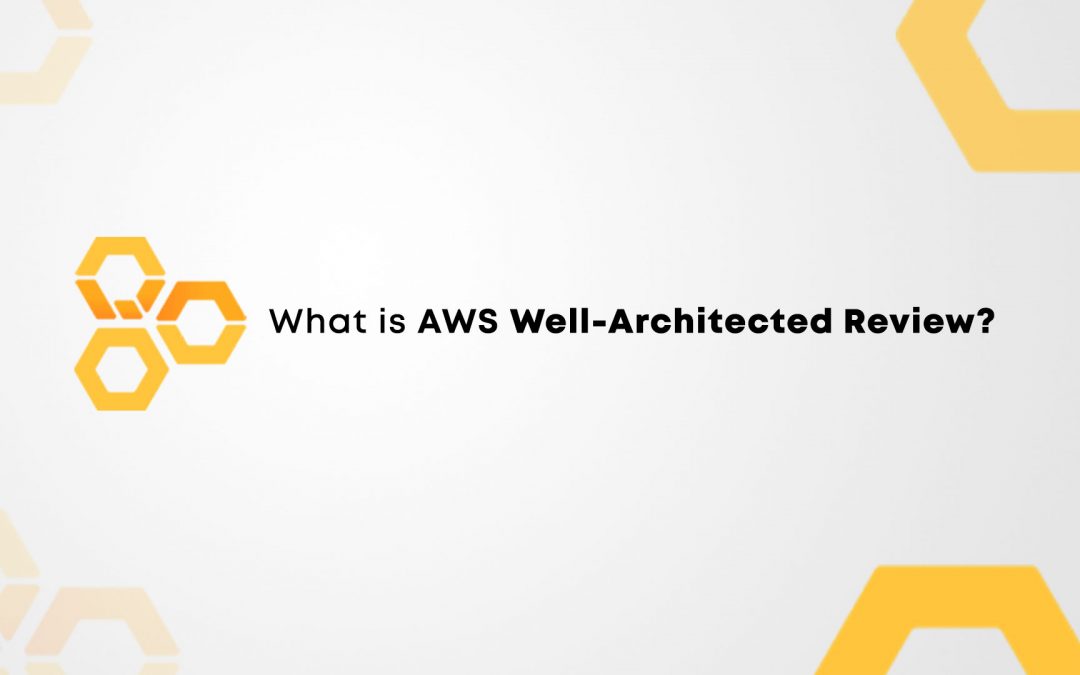What is a Well-Architected Review?
A structured method for evaluating the security and functionality of AWS infrastructure is the Well-Architected review. This process uses best practices in a well-structured review framework to help identify potential concerns before they become serious. In other words, the Well-Architected Framework is a collection of best practices for developing cloud applications. Operational excellence, safety, reliability, performance efficiency, sustainability and cost optimization are the six main themes covered. You can use the Well-Architected Framework to make informed decisions about the architecture of your AWS applications. Using the Well-Architected Framework is easy. A good place to start is by reviewing the Well Architected approach and the Foundation documentation that summarizes the five main areas. Once you fully understand the framework, you can use the Lens tool to evaluate your architecture. The Well-Architected Framework is constantly evolving. This blog explains why it is important to audit your workloads and all applications running on AWS to ensure they follow the WAF framework.
Pillars of Well-Architected review
AWS best practices are described in the AWS Well-Architected Framework for AWS customers. AWS has created a well-structured framework for an AWS customer to review and improve his AWS architecture. The AWS Well-Architected Framework is supported by six pillars: Security, Reliability, Performance Efficiency, Cost Savings, Sustainability, and Operational Excellence.
AWS customers can optimize their architectures to deliver secure, reliable, performant, efficient, and cost-effective cloud applications on AWS by following best practices known as the AWS Well-Architected Review Framework. It provides cloud architects with a consistent approach to review and measure by leveraging AWS best practices and ensuring their current architecture is reviewed and updated with the latest updates.

Let’s take a closer look at the six pillars of the AWS Well-Architected Framework
Operational Excellence:
The AWS Operational Excellence pillars relate to the operation and monitoring of systems and the continuous improvement of processes and procedures to create business value. Best practices for creating reliable and routine operations in all aspects of cloud infrastructure management are described in the AWS WAF Operational Excellence pillar. This allows the organization to extend the benefits of cloud adoption beyond its IT department, while also helping cloud infrastructure to better perform day-to-day operations by managing change, responding to events, and automating standards-based tasks and processes.
According to AWS Best Practices, there are 5 design principles for operational excellence in the cloud.
- Perform operations as code
- Make frequent, small, reversible changes
- Refine operations procedures frequently
- Anticipate failure
- Learn from all operational failures
Security:
The first pillar of the AWS Well-Architected Framework is security (WAF). “The Security pillar includes the capacity to secure information, systems, and assets while delivering business value through risk assessments and mitigation techniques,” according to Amazon’s AWS WAF documentation. The AWS Well-Architected Framework (WAF) outlines how to accomplish this.
There are seven design principles for security pillars in the cloud, that you should consider when implementing security on your architecture:
- Implement a strong identity foundation
- Enable traceability
- Apply security at all layers
- Automate security best practices
- Protect data in transit and at rest
- Keep people away from data
- Prepare for security events
Reliability:
The Well-Architected Framework’s Reliability Pillar covers a system’s ability to recover from infrastructure or service outages and incidents, dynamically acquire capacity to meet demand, and mitigate disruptions such as misconfiguration or temporary network difficulties.
There are five design principles for cloud reliability that you may use to improve the reliability of your architecture:
- Automatically recover from failure
- Test recovery procedures
- Scale horizontally to increase aggregate workload availability
- Stop guessing capacity
- Manage change in automation
Performance Efficiency:
The goal of the performance efficiency pillar is to guarantee that performance is not compromised by choosing the appropriate resource types and sizes that are optimal for workload requirements, monitoring performance, and maintaining efficiency as business demands change.
To achieve performance efficiency, one should comply with the following five best practices principles:
- Democratize advanced technologies
- Go global in minutes
- Use serverless architectures
- Experiment more often
- Consider mechanical sympathy
Cost Optimization:
The cost optimization pillar of the AWS Well-Architected Framework (WAF) offers recommendations for balancing business objectives with budget justification in order to produce a cost-effective workload without reverting to capital-intensive solutions. Cost optimization is the process of cutting costs wherever possible while increasing operational effectiveness.
To create a cost-effective architecture, AWS advises sticking to the following guidelines:
- Implement cloud financial management
- Adopt a consumption model
- Measure overall efficiency
- Stop spending money on undifferentiated heavy lifting
- Analyze and attribute expenditure
Sustainability :
Environmental sustainability is a shared responsibility between customers and AWS. AWS is responsible for cloud sustainability, as well as effective, shared infrastructure, water management, and renewable energy sources.
There are six design principles for the cloud that promote sustainability:
- Understand your impact
- Establish sustainability goals
- Maximize utilization
- Anticipate and adopt new, more efficient hardware and software offerings
- Use managed services
- Reduce the downstream impact of your cloud workloads
With thorough knowledge of these six Well-Architected Framework pillars, a senior solution architect can analyze the cloud infrastructure and create a “Well-Architected Review” report, in which s/he identifies or offers a solution to a gap in the current infrastructure. The first and second phases of a well-architected review are reviews and remissions, respectively, aimed at improving performance effectiveness, security standards, and lower costs. Also, well-structured reviews are essential to achieving desired business goals, technical outcomes, and cost optimization. Architecture reviews are primarily done to troubleshoot the infrastructure and ensure it is up to date. Reviews also help uncover potential areas for improvement to ensure that the architecture meets your needs. Through a well-organized review process, we provide precise recommendations and support to address these areas.
In summary, Well-Architected Review is an important service for anyone who wants to ensure that their infrastructure complies with best practices. Reviews can also be used as a forum for addressing digital platform issues in order to improve the customer experience for customers using your products. Therefore, it is no exaggeration to say that an AWS Well-Architected Review is necessary to maintain a sound AWS architecture.
Benefits of Well-Architected Review
Implementing a well-designed framework is a great way to reduce risk and add value to your organization. Workloads are benchmarked against modern architectural best practices, their overall health is tracked, and risks are identified. By understanding the pros and cons of the decisions they make when building systems on AWS, organizations can connect their technical and business goals.
Key benefits of the Well Architected Review Framework include:
Fewer risks & improved security
Periodic review of the Well Architected Framework helps identify gaps and difficulties before they become major problems and find better solutions to potential future concerns. increase. You can react quickly when it happens. Most importantly, it helps reduce the risk of data loss and security breaches.The AWS Well-Architected Framework enables you to continuously measure your systems. Familiarize yourself with the pillars of the AWS WAR Framework.
Cost Optimization
It might be challenging to detect the excessive costs of your cloud infrastructure, but carrying out a regular WAR will assist you in doing so and help you get back on track with ensuring that all necessary resources are being used effectively.
Consistency
While having a dependable and expandable infrastructure is crucial, your firm also needs consistency to meet the business objective. When everyone utilizes the same framework, they are more likely to be able to create their apps consistently because it will appear as though one individual or group has been doing things continuously without any changes being necessary. In reality, a well-architected review mechanism can guarantee less downtime and higher system availability on AWS.
Insight into potential impact
Changes can be made quickly and conveniently in the Well-Architected Framework’s environment. There is always a likelihood that adjustments will either benefit or harm the system when they are made. The AWS Well-Architected Framework’s processes and procedures assist you in evaluating and addressing any concerns in an organized manner, lowering the possibility of upgrades or additions negatively impacting your system when things don’t go as planned due to change. No matter how adaptable our environment becomes, change is always waiting around the corner. The AWS Well-Architected Framework provides a means for you to compare your systems to industry best practices. You can find opportunities for improvement by conducting frequent and consistent reviews.
Leads to well informed future decision
The Well-Architected Framework helps you understand the impacts of design decisions and help you make well-informed decisions regarding your cloud-native architectures. This makes it possible for you to plan and visualize the situation of workloads that will have high levels of security, reliability, and sustainability in the future, as well as being cost- and performance-optimized.
Shorter timelines for development and deployment
Being able to move promptly is crucial in the business world of today, which is why consistency in your processes and procedures is so crucial. You can build and deploy apps more quickly and securely if you have a reliable infrastructure in place. Working with a well defined architecture also helps developers become more knowledgeable and skilled, which enhances customer service. The final outcome improved client services.
But you must be wondering how frequently you would need to conduct an AWS Well-Architected Framework Review?

As your AWS environment develops and changes, it’s critical to compare your architecture to the most recent AWS platform capabilities and services to ensure that it remains well-architected. We advise carrying out a Well-Architected Framework review at least once a year, depending on the size and complexity of your environment. Consider conducting reviews more frequently if your environment is complicated or changing quickly.
The purpose of the review is to assist you in identifying areas where your architecture can be enhanced to achieve higher efficiency, lower costs, improve performance, or make your applications more resilient.
You will receive a report following the review that includes specific recommendations for enhancing your architecture. It’s a great idea to periodically assess your architecture with the Well-Architected Framework to make sure it still meets your requirements and is up to date with the latest AWS platform features.
Interested in knowing how well-architected you are?
Due to the complexity of the Well-Architected Review, it is recommended that you use a certified Solutions Architect or a Well-Architected Review Partner for the Review, who can help your organization establish good architectural habits through their in-depth understanding and expertise in reviewing critical workloads.
We have approved the AWS well-architected partner program as an AWS advanced partner. Our solution architects have the knowledge and experience to guide your organization through a Well-Architected Review of your workload and ensure that all of your business processes adhere to AWS best practices.
Sign up for a free Well Architected Review today to see how this industry standard can benefit your company! Our team of certified professionals and trained well-architected reviewers will collaborate with you to review and create customized reports, identify best practice gaps, and identify your infrastructure loop hole that needs to fit in your current infrastructure against the AWS Well-Architected Framework.
 Finland
Finland Bangladesh
Bangladesh
